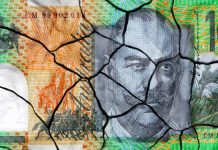The Fed cut rates with 25 bps to 2-2.25% yesterday. It also decided to stop its balance sheet normalization in August, two months earlier than previously indicated. The FOMC’s statement didn’t change in a profound way so attention soon shifted to the press conference. There, chair Powell mentioned three reasons for yesterday’s decisions: a weakening global economy, trade related uncertainty and muted inflationary pressures. Powell acknowledges the US economy has shown resilience and hasn’t been this close to its goals in a long time. The Fed wants to keep the current expansion going by protecting the economy against the before mentioned downside risks with a so-called insurance rate cut. The Fed kept its commitment to “act as appropriate” and Powell didn’t rule out another rate cut (“I didn’t say it’s just one rate cut”). However, he added that the move is a mid-cycle policy adjustment and by not the start of a long easing cycle per se given a still favorable baseline US outlook. Much will depend on the data/other event risks though before deciding on a next move. The FOMC stated that it will “continue to monitor the implications of incoming information” regarding the future path of the Fed Funds rate. All in all we would describe yesterday’s policy move as a hawkish rate cut. Adding to this hawkishness were the dissenting votes of George and Rosengren, who preferred to keep rates stable.
Markets (and Trump, for that matter) were disappointed in the Fed. Investors weren’t expecting Powell to strike such a rather hawkish tone and felt caught off guard. His mid-cycle policy comments in particular triggered a violent yet temporary market reaction, especially at the short end of the yield curve. Markets jitters eased somewhat after Powell later nuanced a bit by keeping the door open for another cut. The US yield curve eventually flattened, which arguably wasn’t Powell’s intention, with daily yield changes varying from +2.6 bps (2-yr) over -1.5 bps (5-yr) to -4.4 bps (10-yr, still holding north of important support at 2% however). The dollar rocketed higher. EUR/USD had been hovering near a support area around 1.11 lately as markets awaited guidance from the Fed. With the US central bank not in a hurry to cut rates further, the couple pierced through this crucial support, improving the technical picture for the dollar short term. The trade weighted dollar (DXY) cleared the 98.35 resistance, now trading at its highest level since May 2017. US equities fell prey to profit-taking (up to -1.23%).
We think yesterday’s market moves might see some follow-through price action today. The US publishes its manufacturing ISM. Markets expect the indicator to improve to 52.0. We see risks on the upside following a strong uptick of important regional indicators. That could further support US (short end) yields and the dollar post-Fed. In other central bank news, the Czech central bank and the Bank of England (see below) hold policy meetings today.
Sterling finally succeeded a countermove on the recent sell-off yesterday. The move was mainly technical in nature. We didn’t see any easing in the hard Brexit stance of the new government. Late yesterday, the UK government even announced that it will raise the funding to prepare for a no-deal Brexit by an extra £ 2.1 bn. Even so, EUR/GBP declined off peak levels in the high 0.91 area on Tuesday and early yesterday to close the day at 0.9110. GBP/USD initially also rebounded, but this gain was reversed as the dollar jumped during the Fed press conference. Today, the BoE will announce its policy decision. The base rate is expected unchanged at 0.75%. The bank will also publish a quarterly inflation report. Markets will be keen to see how the BoE reacts to context of growing economic uncertainty due to the rising likelihood of a disorderly Brexit while at the same time UK yields and the pound have declined substantially. Until now, the BoE signaled the possibility of slightly higher rates in case off an orderly Brexit, but this scenario is completely out of line with current market pricing. We expect the BoE at least to open the door for monetary policy support in case of a sharp weakening of the economy/sharp rise of uncertainty. In any case, it will be difficult to convince markets of higher rates in the current environment. If anything, we expected the new message of the BoE to be GBP negative rather than GBP supportive. That said, the price action in the UK currency will in the first place be driven by Brexit headlines, rather than by expectations on BoE policy.












